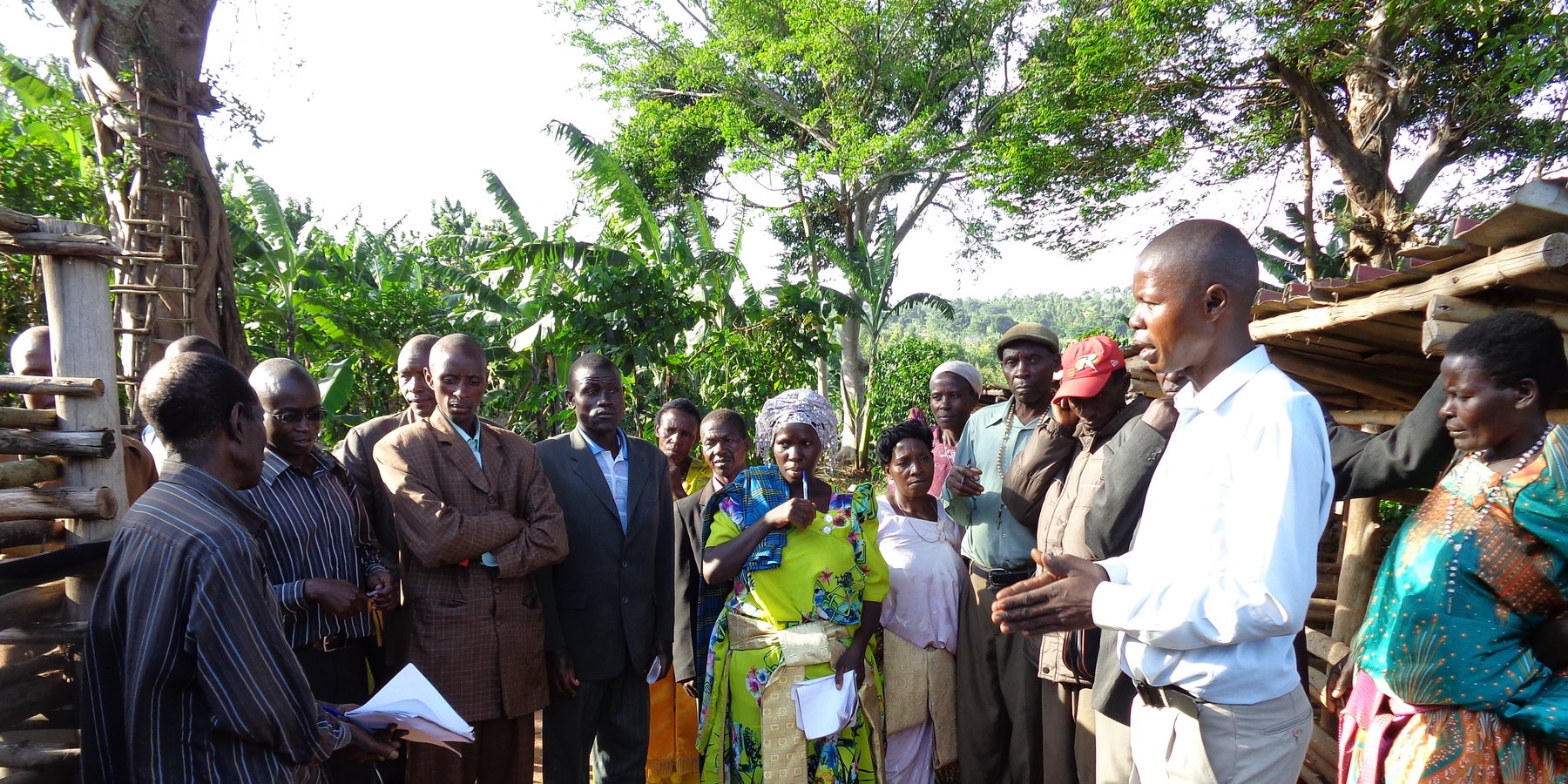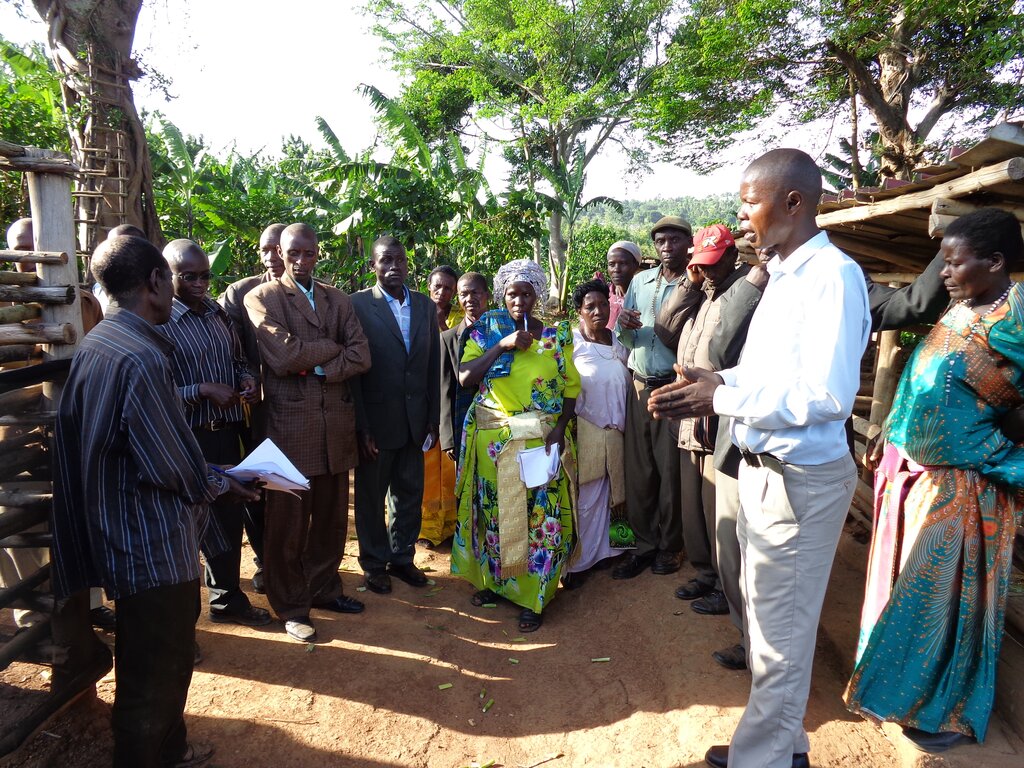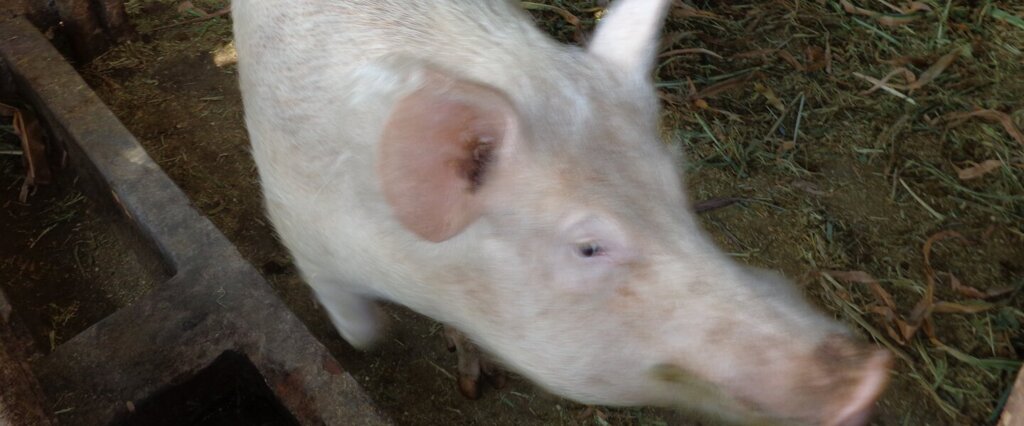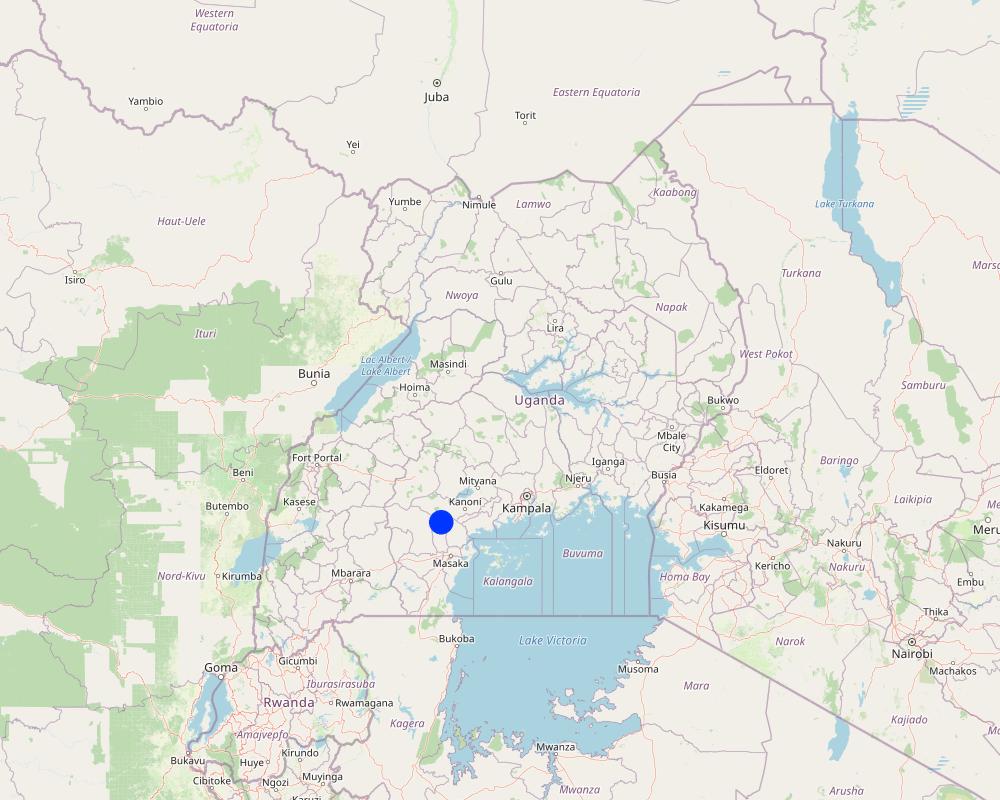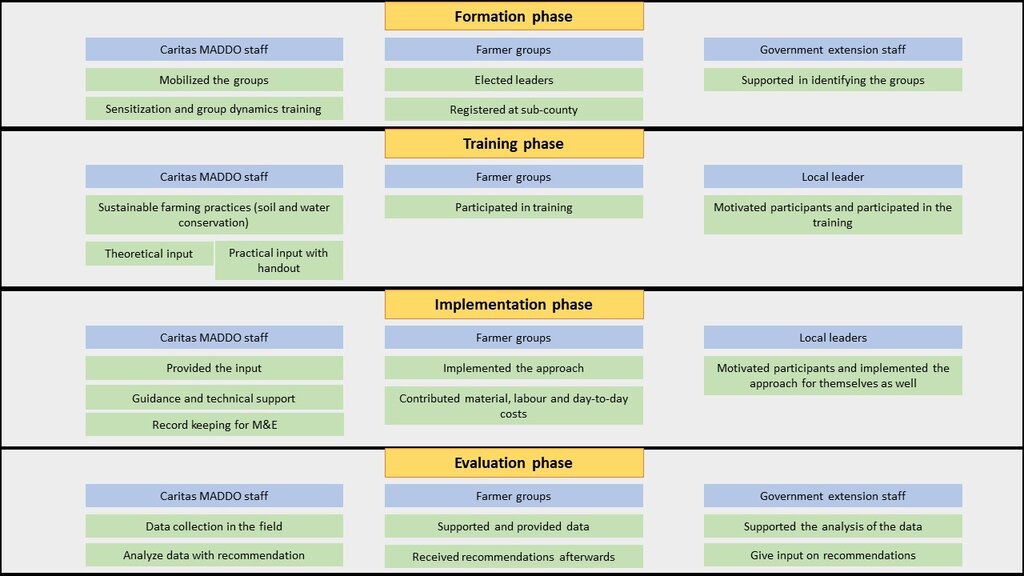MADDO SLM approach [Uganda]
- Criação:
- Atualização:
- Compilador/a: Tonny Kyambadde
- Editores: Beatrice Nabukenya, Michael Mulindwa, Kyagaba Prossy, Annika Reimann
- Revisores: William Critchley, Rima Mekdaschi Studer
obugimu bwettaka ngokozesa obusa bwembizzi mu mwannyi ne bitooke
approaches_6370 - Uganda
Veja as seções
Expandir tudo Recolher tudo1. Informação geral
1.2 Detalhes do contato das pessoas capacitadas e instituições envolvidas na avaliação e documentação da abordagem
Nome do projeto que facilitou a documentação/avaliação da Abordagem (se relevante)
Euregio-East Africa Livelihood Improvement Programme (EEALIP)Nome da(s) instituição(ões) que facilitou(ram) a documentação/avaliação da Abordagem (se relevante)
Caritas Masaka Diocesan Development Organisation (Caritas MADDO) - Uganda1.3 Condições em relação ao uso da informação documentada através de WOCAT
Quando os dados foram compilados (no campo)?
14/07/2021
O/a compilador/a e a(s) pessoa(s) capacitada(s) aceitam as condições relativas ao uso de dados documentados através da WOCAT:
Sim
1.4 Referência ao(s) questionário(s) sobre tecnologias da GST
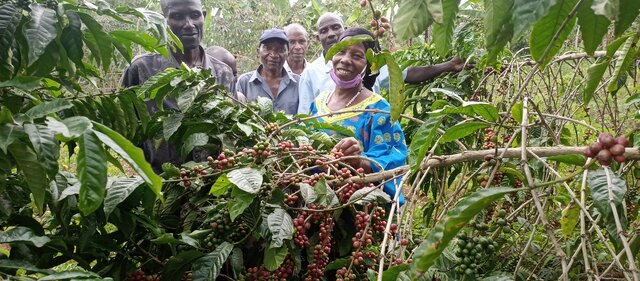
Piggery-Banana-Coffee technology [Uganda]
The "Piggery-Banana-Coffee" sustainable land management technology is a proven practice that significantly improves soil fertility and productivity in an integrated farming system for smallholder farmers in Uganda.
- Compilador/a: Tonny Kyambadde
2. Descrição da abordagem de GST
2.1 Descrição curta da abordagem
This integrated soil fertility management approach aims at identifying and promoting practices in land management that can increase soil fertility, reduce land degradation and improve production. Under this specific example, organic manure from a piggery was applied to banana and coffee plantations.
2.2 Descrição detalhada da abordagem
Descrição detalhada da abordagem:
The main objective of the MADDO approach is to test and promote, in a pilot area, the advantages for small-scale farmers of organic manure from piggeries in coffee and banana plantations. The approach aims not only to increase farmers' production through multiple income streams from the integrated production systems but also to secure those income streams by enhancing soil fertility and decreasing land degradation for long-term sustainability. One distinct feature of the approach is the emphasis on cost-effective technologies for small-scale farmers. In the case of the piggery-banana-coffee enterprise, the investment capital needed is very low and the technology is not complicated.
The focus was on small-scale farmer groups of 30-35 members (roughly 200 farmers in 6 groups participated) and was coordinated by Caritas MADDO (one project coordinator and three field staff officers) and agriculture officers from the subcounty level. Groups were identified and implementation concentrated on various trainings for farmers on piggery management, banana and coffee production. In particular, the production of organic manure was highlighted in training, with emphasis on collection, storage and application. After basic training, farmers are led through the one-year production cycle which includes the following stages: rearing of the pigs; manure collection; storage in a pit for decomposition (one to two months); application of the manure during the rainy season when the plants are healthy and actively growing; and then ongoing monitoring, and if needed repetition of the stages and reapplication of the manure (two times per year).
The small-scale farmers appreciate the technology because of the higher production and income they are gaining. It is easy and cheap - particularly because the enterprise can be spread by beneficiary farmers passing on piglets to new farmers. Nevertheless, there is the possibility of the pigs catching diseases (African swine fever) and once infected the farmers have no options for relief as an entire piggery can be wiped out. Moreover, farmers have complained that water scarcity and unsuitable weather conditions can affect production.
2.3 Fotos da abordagem
2.5 País/região/locais onde a abordagem foi aplicada
País:
Uganda
Região/Estado/Província:
Central Region
Especificação adicional de localização:
Lutugunda village in Bukomansimbi district
Map
×2.6 Datas de início e término da abordagem
Caso o ano exato seja desconhecido, indique a data aproximada de início da abordagem:
mais de 50 anos atrás (tradicional)
Comentários:
The approach is based on the Piggery Banana-Coffee Sustainable Land Management technology that has been practiced for years in the project area. The Euregio project has just promoted the approach and technology recently again.
2.7 Tipo de abordagem
- Iniciativa/inovação local recente
2.8 Principais metas/objetivos da abordagem
The main objective of the approach from an organizational perspective was to test in a pilot area the advantages of organic manure from piggery in a coffee and banana plantation. The approach aims not only to increase farmers' production through multiple income streams from piggery, banana and coffee but also to secure those income streams by enhancing the soil fertility and decreasing land degradation for long-term sustainability.
2.9 Condição que propiciam ou inibem a implementação de tecnologia/tecnologias aplicada(s) segundo a abordagem
Normas e valores sociais/culturais/religiosos
- Propício
Piggeries are common among the groups
Disponibilidade/acesso a recursos e serviços financeiros
- Propício
Input supply was provided
Quadro institucional
- Propício
With the presence of the extension officers from the government and other NGOs in the area
Colaboração/coordenção de atores
- Propício
Collaboration was part of the overall project design
Quadro jurídico (posse de terra, direitos de uso da terra e da água)
- Propício
only customary rights practices, but no conflicts
Políticas
- Propício
Governança da terra (tomada de decisões, implementação e aplicação)
- Propício
Conhecimento sobre GST, acesso a suporte técnico
- Propício
Mercados (para comprar entradas, vender produtos) e preços
- Propício
In particular piggery has a high market in the area
Carga de trabalho, disponibilidade de força de trabalho
- Propício
3. Participação e papel das partes interessadas envolvidas
3.1 Partes interessadas envolvidas na abordagem e seus papéis
- Usuários de terra/comunidades locais
Stakeholders centered around the small-scale farmers (one group of 30-35 members)
- Organizações comunitárias
Caritas MADDO
- Especialistas em GST/ consultor agrícola
Agriculture extension officers from subcounty
- Organização não governamental
Caritas MADDO
- Governo local
3.2 Envolvimento do usuários de terra/comunidades locais nas diferentes fases da abordagem
| Envolvimento do usuários de terra/comunidades locais | Especifique quem estava envolvido e descreva as atividades | |
|---|---|---|
| Iniciação/motivação | Participativo | The project team involved the community leaders and farmers from prior project phases as well as governmental extension officers have been involved in the initiation of the approach. Activities encompasses the joint group formation and mobilization of fellow farmers to discuss the training needs and capacities. |
| Planejamento | Participativo | The above people then continued with jointly discuss the modus operantes with creating a training schedule and actively participating in the learning journey. |
| Implementação | Automobilização | The implementation mainly encompasses the adoption of the SLM technology, and the farmers were the main implementors and actors with offering pilot land and labor. The project contributed advisory support, monitoring and financial support. |
| Monitoramento/avaliação | Participativo | M&E was done by the project staff, extension officers and the farmers together with the community leaders themselves on a regular basis. |
3.3 Fluxograma (se disponível)
3.4 Decisão sobre a seleção de tecnologia/tecnologias de GST
Especifique quem decidiu sobre a seleção de tecnologia/tecnologias a serem implementadas:
- Principalmente usuários da terra, apoiados por especialistas em GST
Explique:
Mainly land users, supported by implementing organization
Especifique em que base foram tomadas as decisões:
- Experiência pessoal e opiniões (não documentado)
4. Suporte técnico, reforço das capacidades e gestão do conhecimento
4.1 Reforço das capacidades/ formação
Foi oferecida formação aos usuários da terra/outras partes interessadas?
Sim
Especifique quem foi capacitado:
- Usuários de terra
- Equipe de campo/consultores
Tipo de formação:
- Em exercício
- Agricultor para agricultor
Assuntos abordados:
Land and soil management
Sustainable agricultural practices
Piggery management
4.2 Serviço de consultoria
Os usuários de terra têm acesso a um serviço de consultoria?
Sim
Especifique se foi oferecido serviço de consultoria:
- nas áreas dos usuários da terra
4.3 Fortalecimento da instituição (desenvolvimento organizacional)
As instituições foram fortalecidas ou estabelecidas através da abordagem?
- Sim, pouco
Especifique a que nível (níveis) as instituições foram fortalecidas ou estabelecidas:
- Local
Especifique o tipo de apoio:
- Reforço das capacidades/ formação
Dê mais detalhes:
Input support
4.4 Monitoramento e avaliação
Monitoramento e avaliação são partes da abordagem?
Sim
Caso afirmativo, esta documentação é destinada a ser utilizada para monitoramento e avaliação?
Sim
4.5 Pesquisa
A pesquisa foi parte da abordagem?
Sim
Especifique os tópicos:
- Ecologia
Dê mais detalhes e indique quem realizou a pesquisa:
Project staff was during minor research on soil improvement and in particular on fitting livestock integrations. Due to this research pigs were chosen as preferred livestock.
5. Financiamento e apoio material externo
5.1 Orçamento anual para o componente de GST da abordagem
Indique o orçamento anual para o componente de GST da abordagem em US$:
50000,00
Caso o orçamento exato seja desconhecido, indique a faixa:
- 10.000-100.000
Comentários (p. ex. principais fontes de recursos/principais doadores):
The budget includes staff salary, transport, training costs and inputs for the farmers. In total the approach reached around 200 farmers within six groups in Bukomansimbi (30-35 participants each).
5.2 Apoio financeiro/material concedido aos usuários da terra
Os usuários da terra receberam apoio financeiro/material para a implementação de tecnologia/tecnologias?
Sim
Caso afirmativo, especifique tipo(s) de apoio, condições e fornecedor(es):
Land users were given input support (coffee seedlings, banana suckers, pigs)
5.3 Subsídios para entradas específicas (incluindo mão-de-obra)
- Nenhum
- Agrícola
| Especifique quais entradas foram subsidiadas | Em que medida | Especifique os subsídios |
|---|
Se a mão-de-obra pelos usuários da terra foi uma entrada substancial, isso foi:
- Voluntário
5.4 Crédito
Foi concedido crédito segundo a abordagem para atividades de GST?
Não
5.5 Outros incentivos ou instrumentos
Foram utilizados outros incentivos ou instrumentos para promover a implementação das tecnologias de GST?
Não
6. Análise de impactos e declarações finais
6.1 Impactos da abordagem
A abordagem concedeu autonomia aos usuários locais de terra, melhorou a participação das partes interessadas?
- Não
- Sim, pouco
- Sim, moderadamente
- Sim, significativamente
Technical knowledge of improved management was testified by local land users and group cohesion was strengthened through community labor pooling.
The piloting of the approach lead to evidence decision-making in the form that farmers know about the advantage of the organic manure in increasing soil fertility and increased production.
Agriculture extension officer
In particular women were part of the test group (80 %)
7 farmers were youth (under 30 years) in the group
Training on hygiene of the piggery was given. Moreover, farmers mobilized for underground water tanks (positive side effect of the approach)
Prevents soil degradation
6.2 Principal motivação dos usuários da terra para implementar a GST
- Produção aumentada
A pulling factor was the fast economic benefit and food security for the participants.
- Lucro (lucrabilidade) aumentado, melhora da relação custo-benefício
Income was increased through the multiple income streams.
- Pagamentos/subsídios
The Euregio project was contributing inputs required for the technology.
- melhoria dos conhecimentos e aptidões de GST
Curiosity and eagerness to learn about the approach and technology.
6.3 Atividades de sustentabilidade de abordagem
Os usuários da terra podem manter o que foi implementado através da abordagem (sem apoio externo)?
- Sim
Caso afirmativo, descreva como:
With the pass on mechanisms of the pigs and the capacity building through the extension officers. The pass on mechanisms works similar to the Heifer pass on, where participating farmers have to contribute their newborn piglets to other members within the group that have not benefited from the prior project input.
6.4 Pontos fortes/vantagens da abordagem
| Pontos fortes/vantagens/oportunidades na visão do usuário da terra |
|---|
| The pilot small-scale farmers appreciate the approach because of the higher production and income there are gaining. The approach is easy and cheap to be implemented and in particular because a pass-on mechanisms of the pigs were applied. |
| Pontos fortes/vantagens/oportunidades na visão do/a compilador/a ou de outra pessoa capacitada |
|---|
| Advantages was in the participatory approach, and it was an interactive learning experience |
6.5 Pontos fracos, desvantagens da tecnologia e formas de superá-los
| Pontos fracos/desvantagens/riscos na visão do usuário da terra | Como eles podem ser superados? |
|---|---|
| The approach is unfortunately affected by the possibility of the pigs catching diseases (African swine fever) and once infected the farmers have no options for relief as entire piggery will be wiped out. | Hygiene training was given and practiced |
| Moreover, farmers have complained that water scarcity and unsuitable weather conditions have affected the approach. | Farmers mobilized for underground water tanks |
| Pontos fracos/vantagens/riscos na visão do/a compilador/a ou de outra pessoa capacitada | Como eles podem ser superados? |
|---|---|
| For the compilers it was difficult to access some of the Information from farmers (e.g., basic records on feeding or construction) | Training was given and also information was collected together with farmers (e.g. calculation made together on construction costs) |
7. Referências e links
7.1 Métodos/fontes de informação
- visitas de campo, pesquisas de campo
Roughly 20 field visits have been conducted (without trainings) to the participating groups.
- entrevistas com usuários de terras
Interviews have been done on group level and individually. Mainly the participating farmers, community leaders and extension officers have been interviewed by the project staff to gain data and to validate information.
- compilação de relatórios e outra documentação existente
Sustainable Agricultural Practice trainings and manual (from Caritas MADDO) and literature used for the technology
7.2 Referências às publicações disponíveis
Título, autor, ano, ISBN:
Not used
7.3 Links para informação relevante que está disponível online
Título/ descrição:
Not used
Links e módulos
Expandir tudo Recolher tudoLinks

Piggery-Banana-Coffee technology [Uganda]
The "Piggery-Banana-Coffee" sustainable land management technology is a proven practice that significantly improves soil fertility and productivity in an integrated farming system for smallholder farmers in Uganda.
- Compilador/a: Tonny Kyambadde
Módulos
Não há módulos


